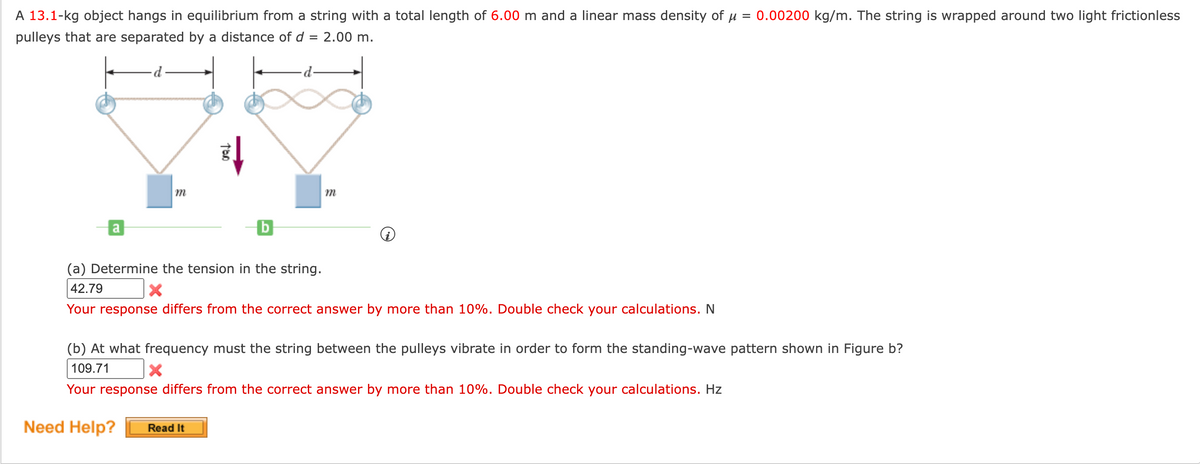A 13.1-kg object hangs in equilibrium from a string with a total length of 6.00 m and a linear mass density of u = 0.00200 kg/m. The string is wrapped around two light frictionles pulleys that are separated by a distance of d = 2.00 m. (a) Determine the tension in the string. 42.79 Your response differs from the correct answer by more than 10%. Double check your calculations. N (b) At what frequency must the string between the pulleys vibrate in order to form the standing-wave pattern shown in Figure b? 109.71 Your response differs from the correct answer by more than 10%. Double check your calculations. Hz
Simple harmonic motion
Simple harmonic motion is a type of periodic motion in which an object undergoes oscillatory motion. The restoring force exerted by the object exhibiting SHM is proportional to the displacement from the equilibrium position. The force is directed towards the mean position. We see many examples of SHM around us, common ones are the motion of a pendulum, spring and vibration of strings in musical instruments, and so on.
Simple Pendulum
A simple pendulum comprises a heavy mass (called bob) attached to one end of the weightless and flexible string.
Oscillation
In Physics, oscillation means a repetitive motion that happens in a variation with respect to time. There is usually a central value, where the object would be at rest. Additionally, there are two or more positions between which the repetitive motion takes place. In mathematics, oscillations can also be described as vibrations. The most common examples of oscillation that is seen in daily lives include the alternating current (AC) or the motion of a moving pendulum.

Trending now
This is a popular solution!
Step by step
Solved in 2 steps with 2 images







